Abstract
Influences of extended training and temporal contingencies on reaction time were studied in relation to developmental differences. Older and younger men were trained on a chained schedule in which completion of a variable interval produced a terminal link in which reaction time was measured. The reaction-time procedure involved a conditional discrimination with matching to sample in one component and oddity matching in the other. During baseline training, no time limit was placed on the response to the discrimination choice stimuli. Subsequently, increasingly severe time limits were imposed over a series of sessions. Older and younger men showed increased speeds (decreased reaction times) when temporal contingencies were imposed, and these changes were maintained during post-training baseline sessions when there was unlimited time in which to respond. The younger men generally responded faster than the older ones, and age differences were not appreciably reduced during the course of the experiment. The results indicated the feasibility of studying reaction time in human subjects using operant procedures analogous to those developed for the study of nonverbal organisms.
Full text
PDF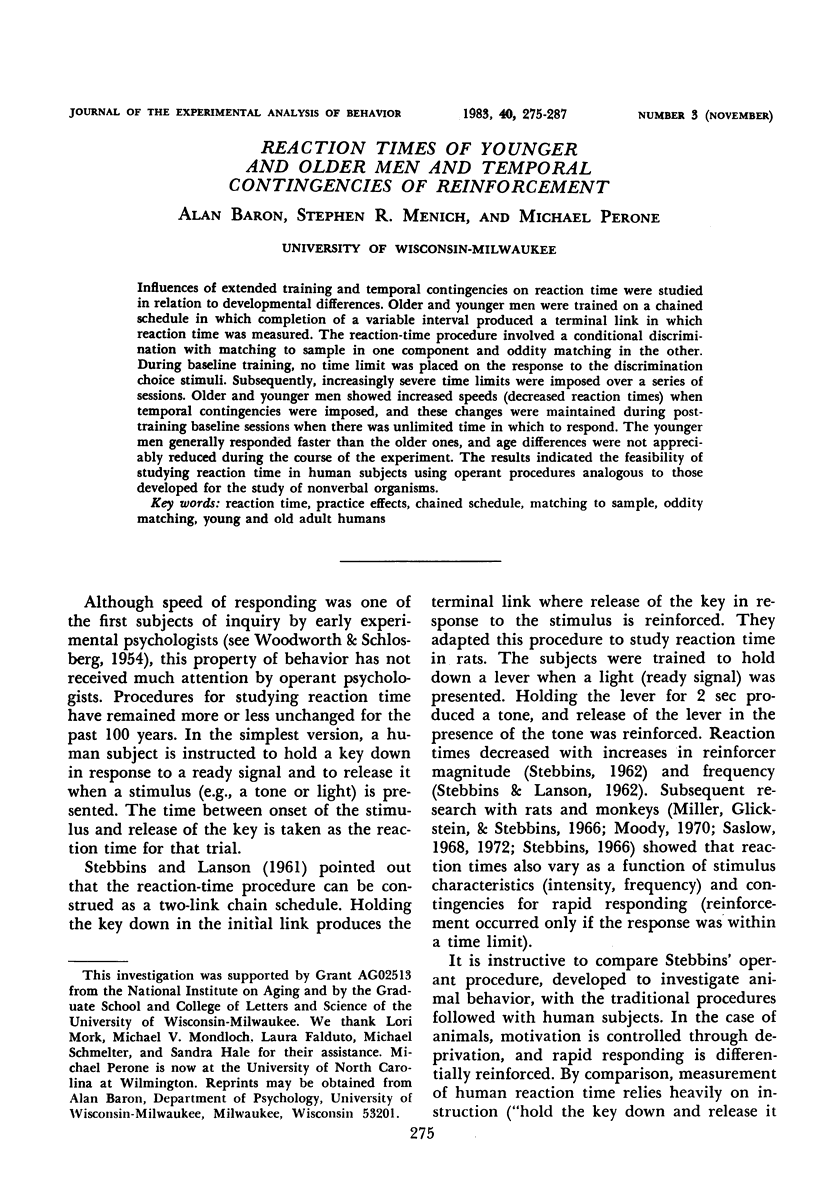
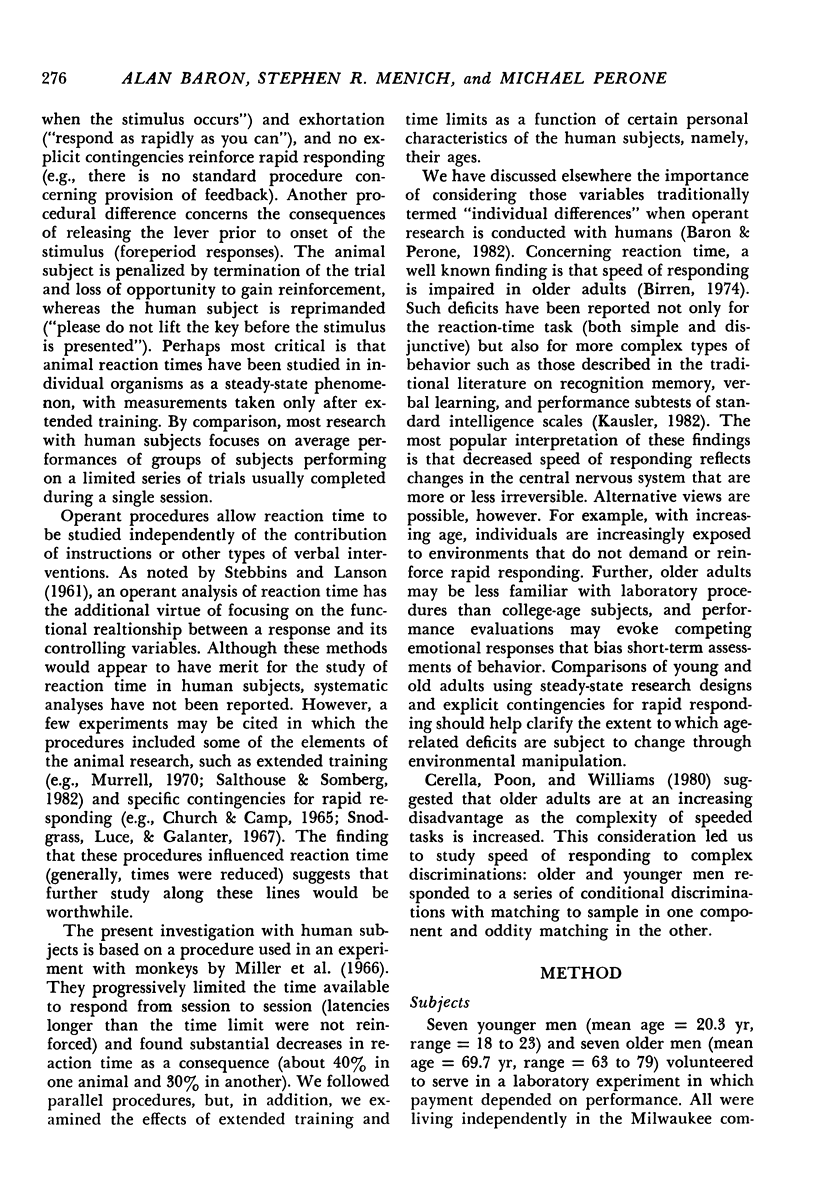
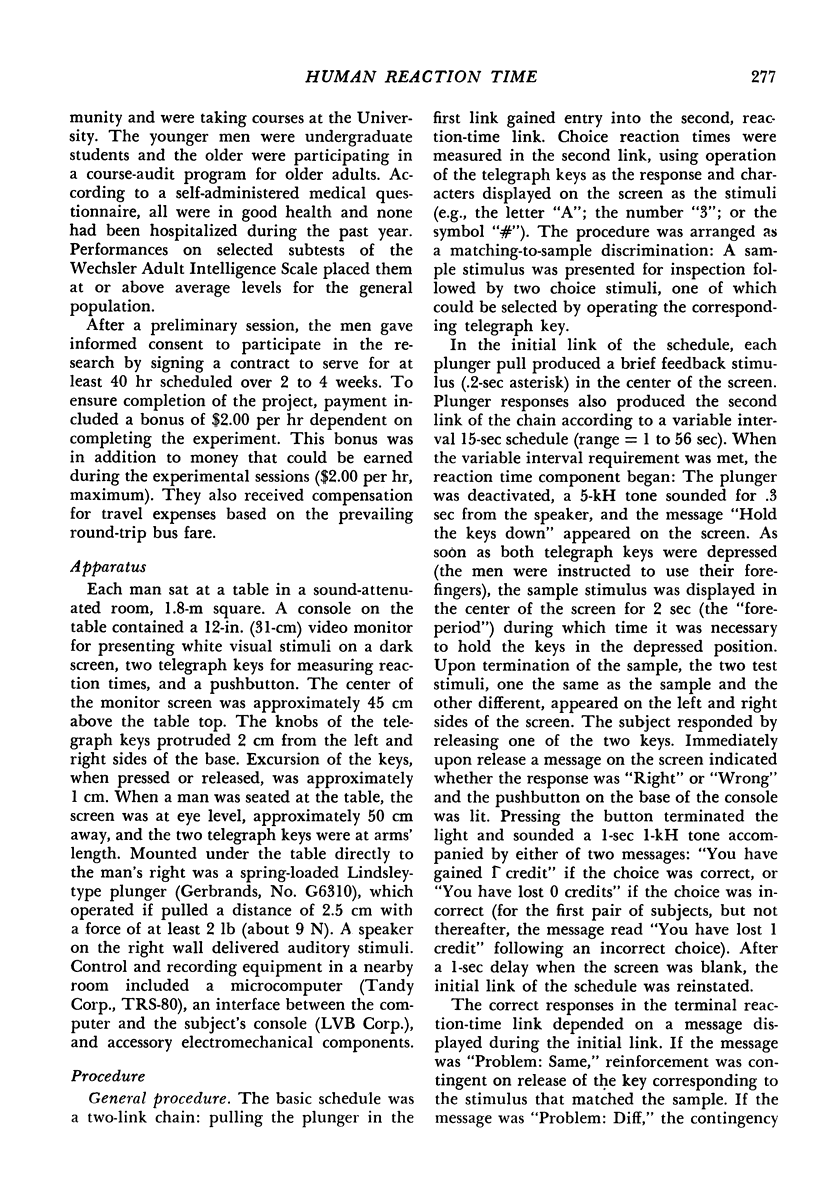
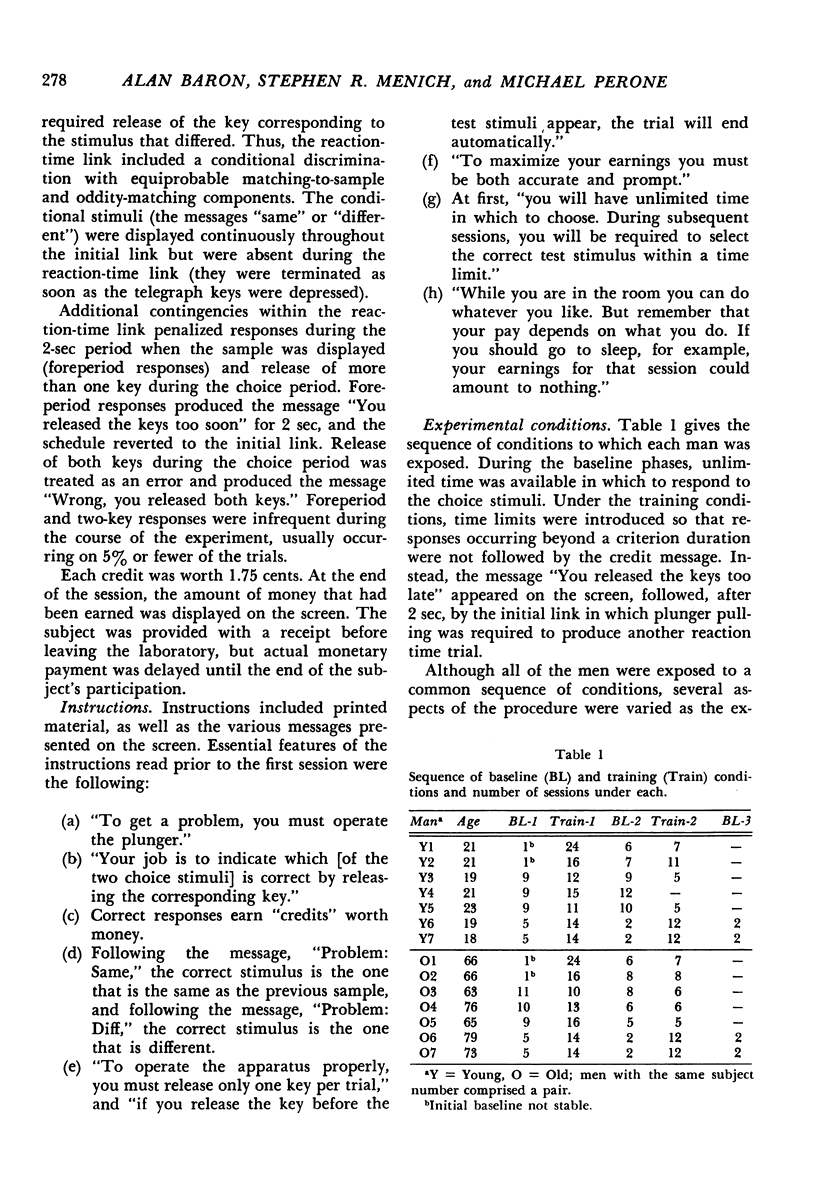
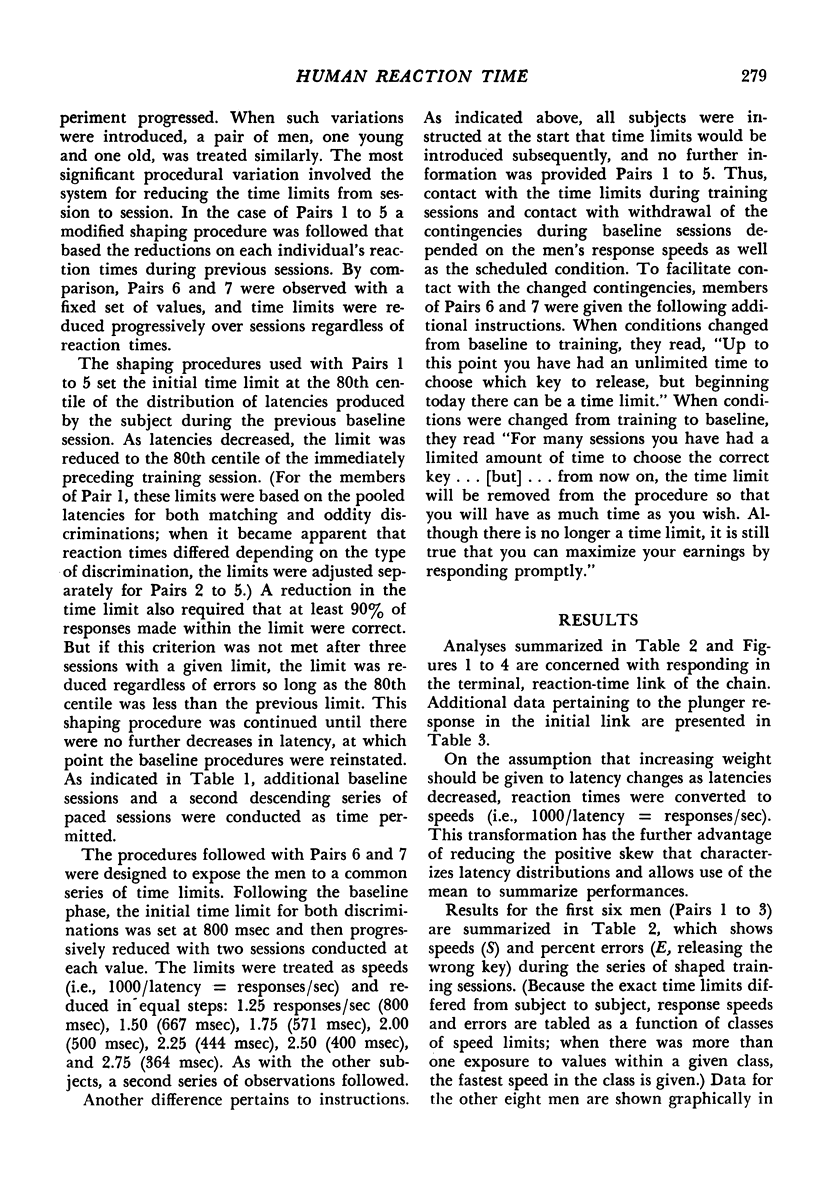
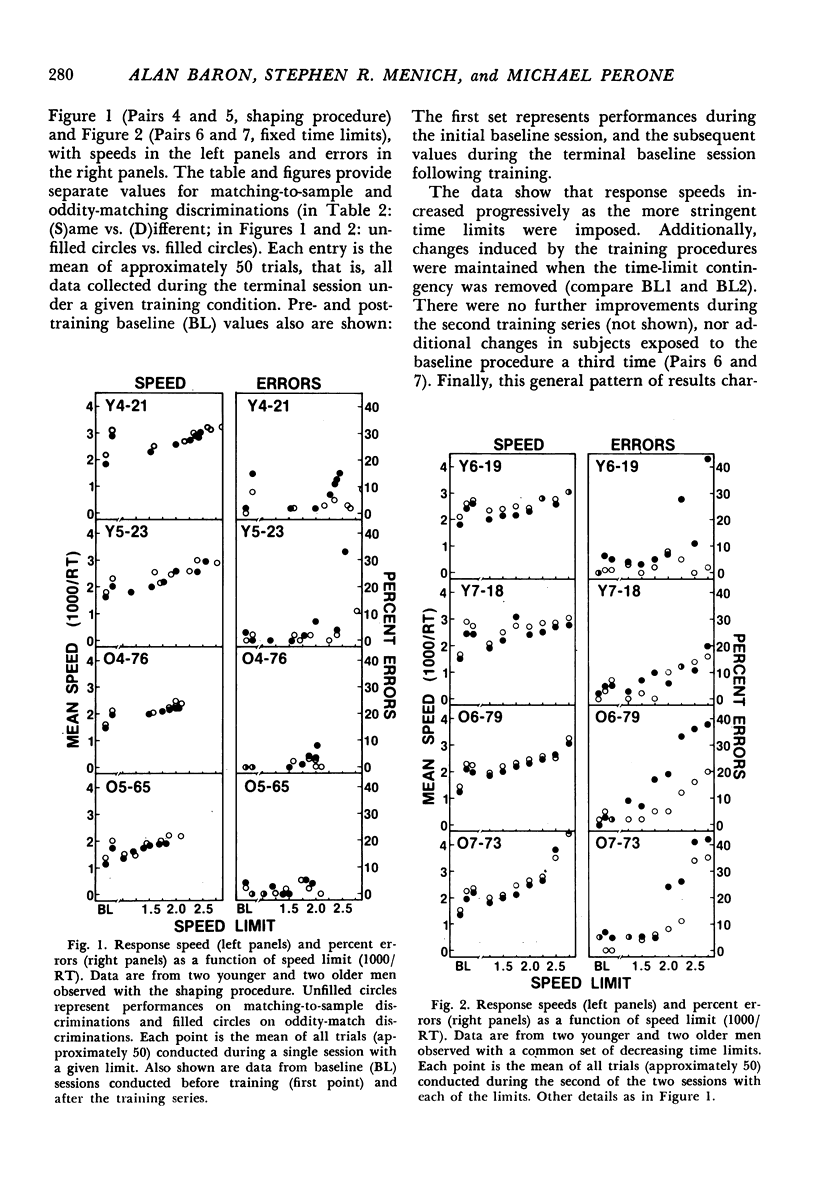
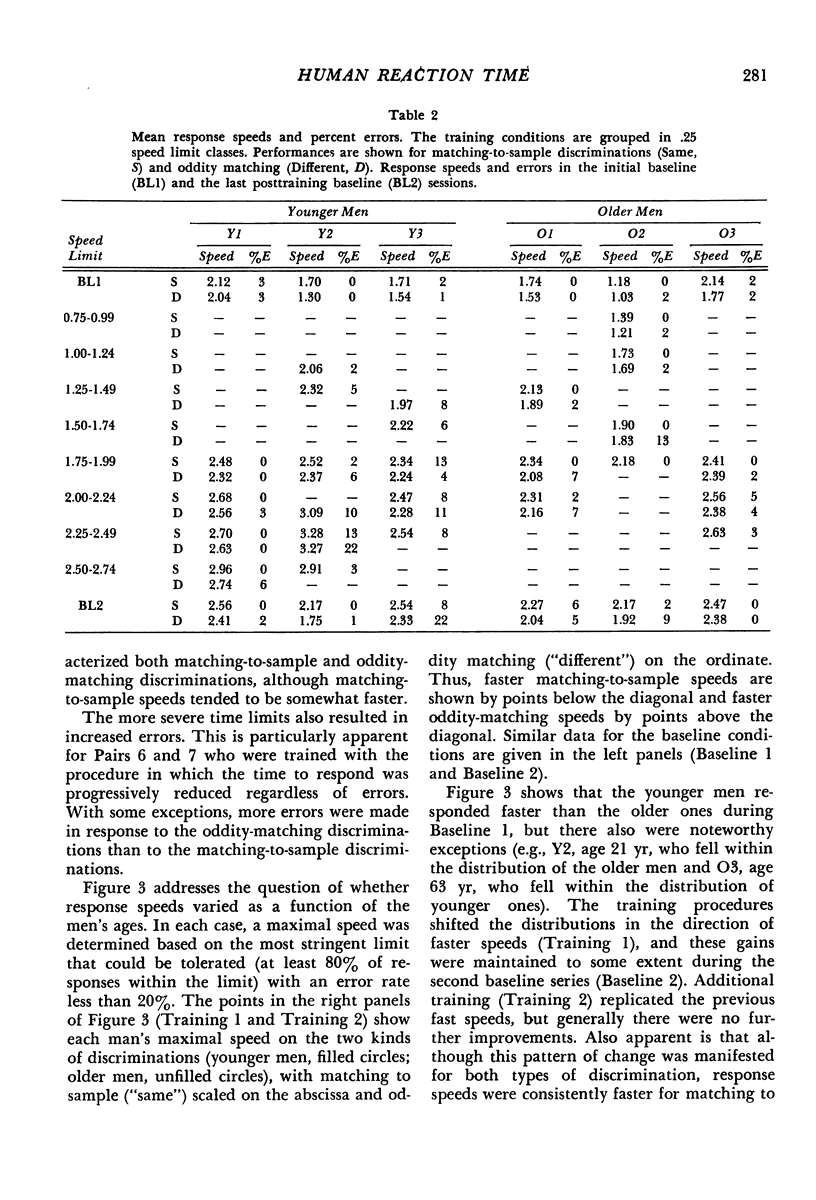
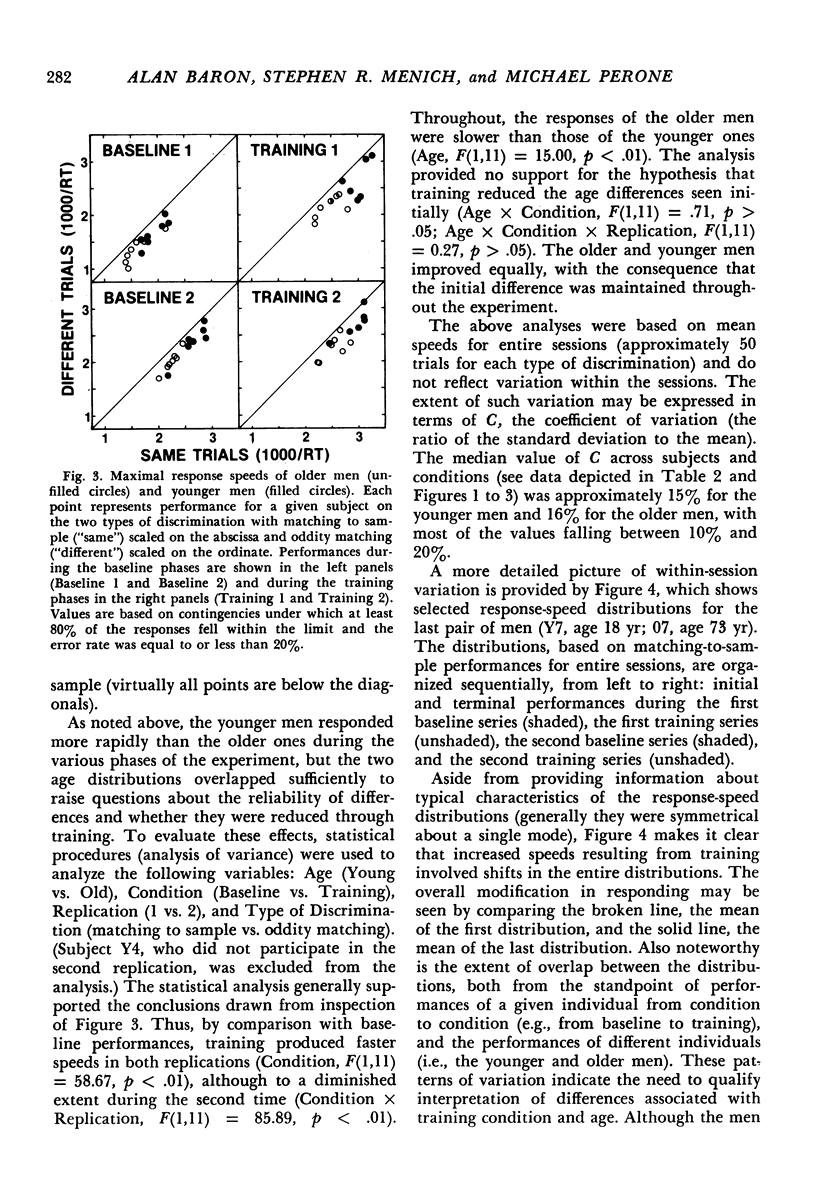
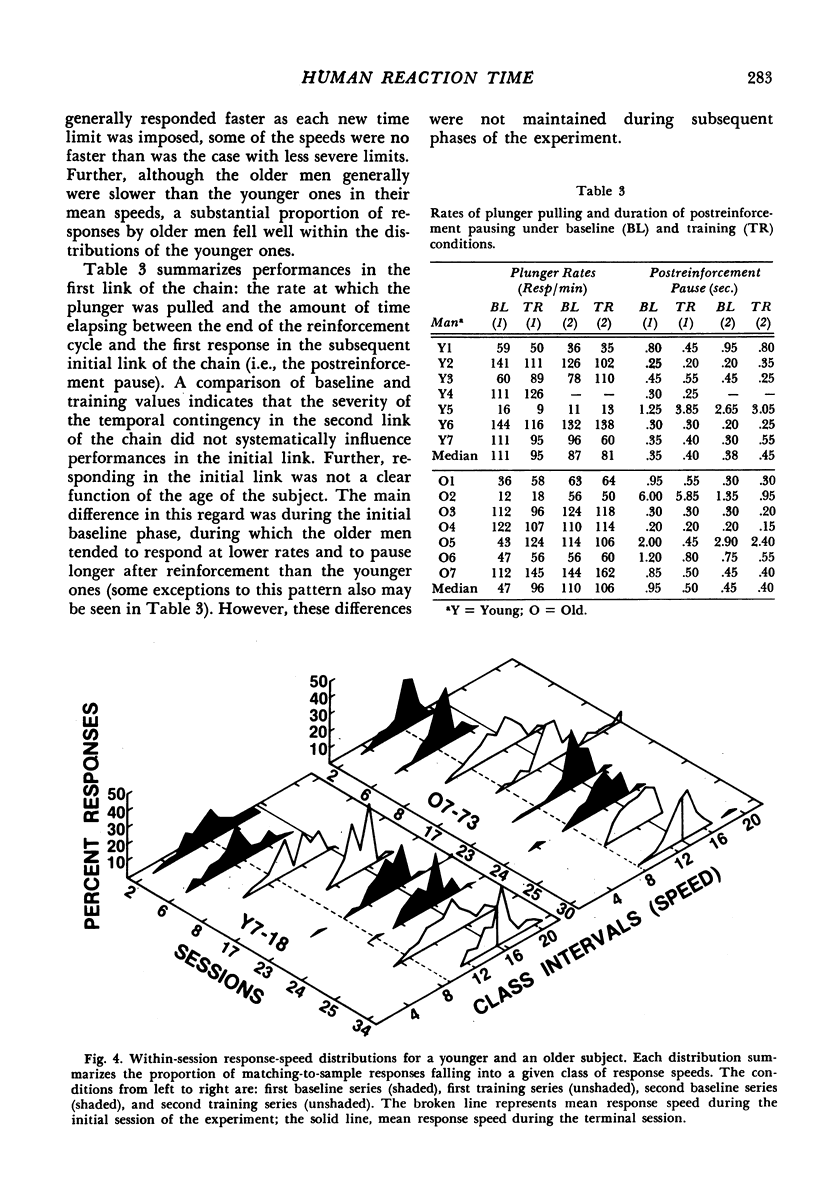
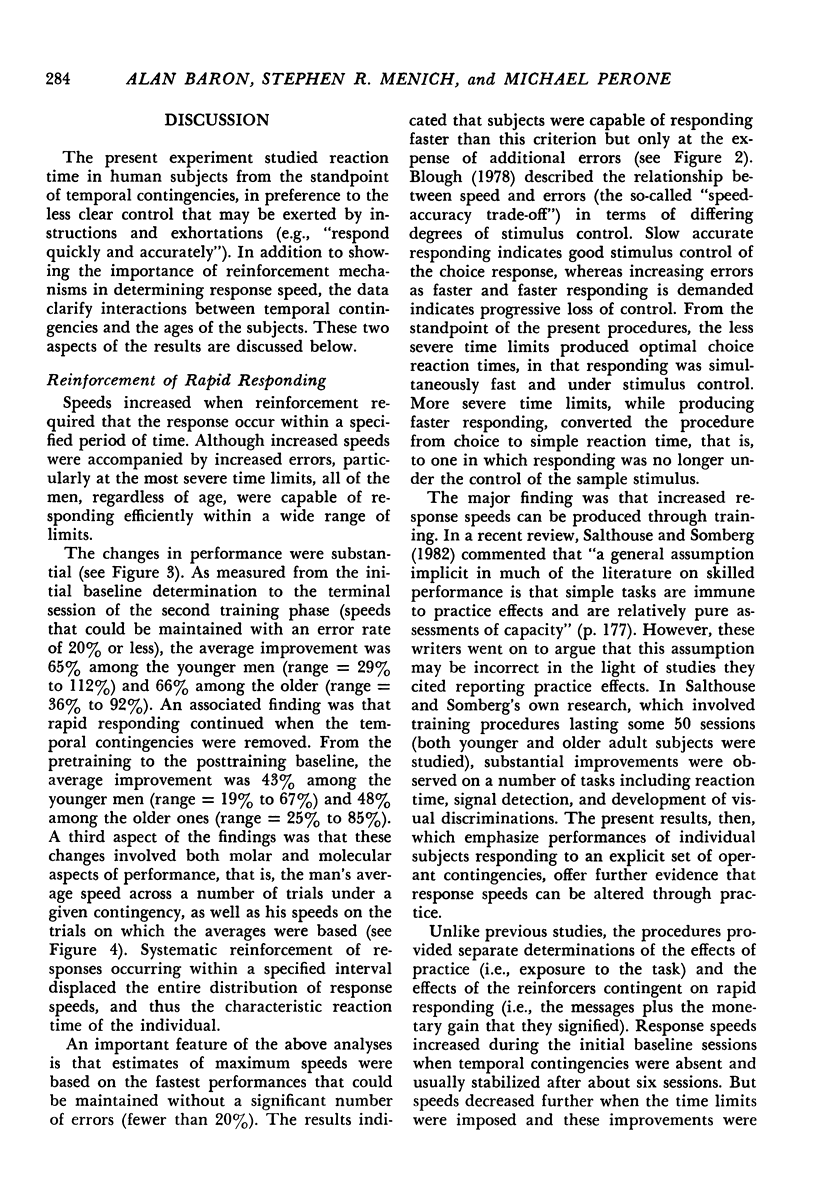
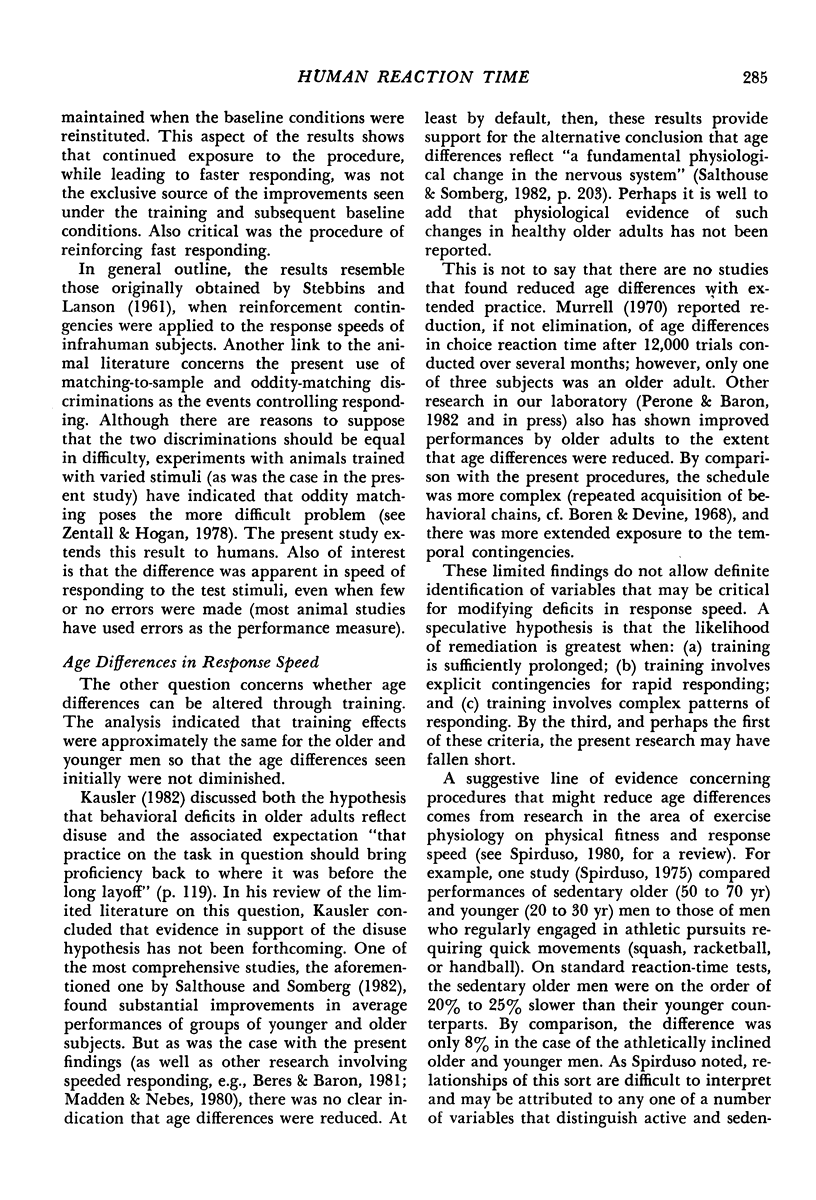
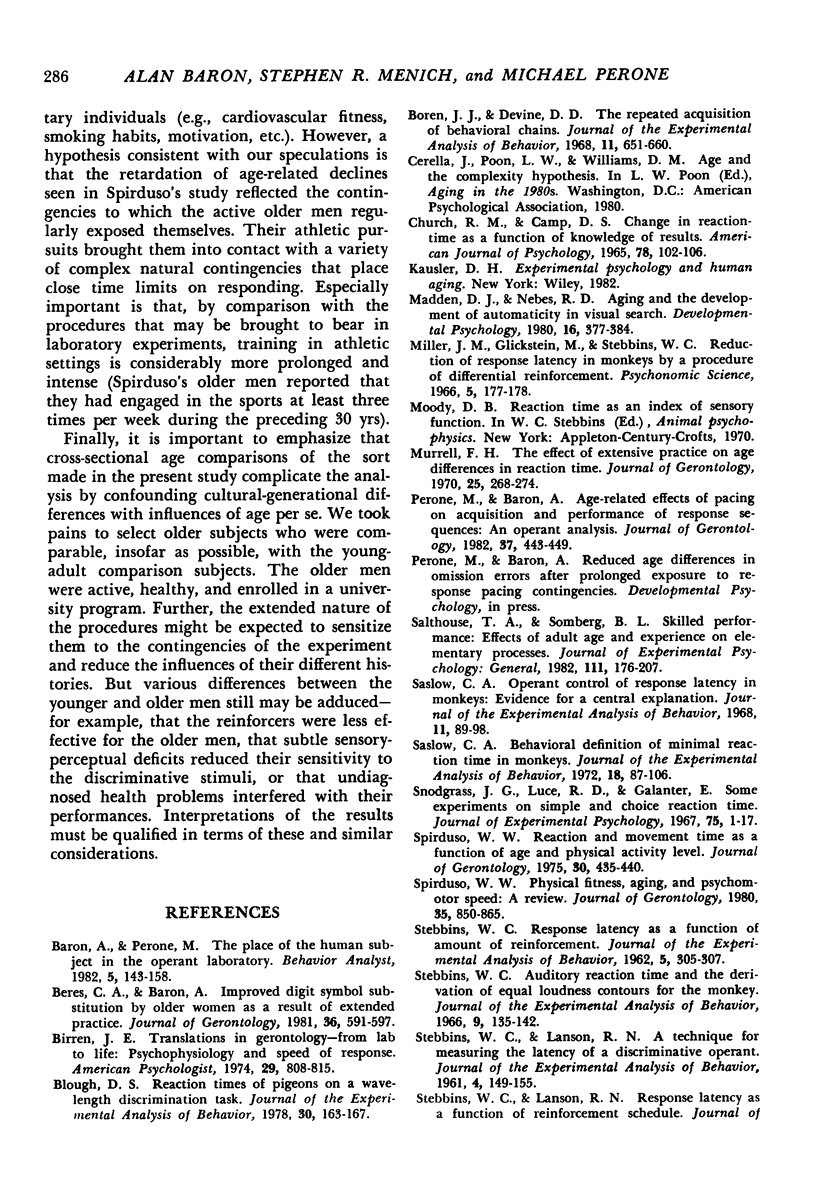
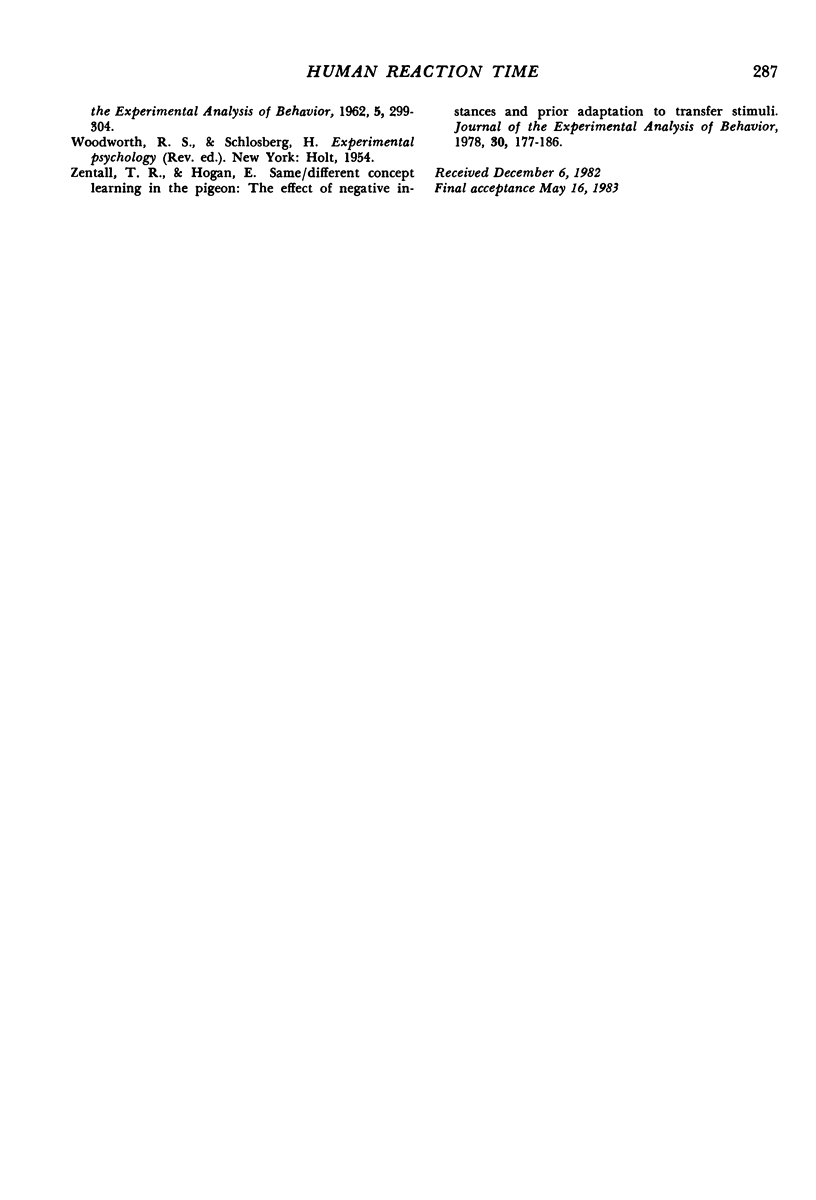
Selected References
These references are in PubMed. This may not be the complete list of references from this article.
- Beres C. A., Baron A. Improved digit symbol substitution by older women as a result of extended practice. J Gerontol. 1981 Sep;36(5):591–597. doi: 10.1093/geronj/36.5.591. [DOI] [PubMed] [Google Scholar]
- Birren J. E. Translations in gerontology--from lab to life. Psychophysiology and speed of response. Am Psychol. 1974 Nov;29(11):808–815. doi: 10.1037/h0037433. [DOI] [PubMed] [Google Scholar]
- Blough D. S. Reaction times of pigeons on a wavelength discrimination task. J Exp Anal Behav. 1978 Sep;30(2):163–167. doi: 10.1901/jeab.1978.30-163. [DOI] [PMC free article] [PubMed] [Google Scholar]
- Boren J. J., Devine D. D. The repeated acquisition of behavioral chains. J Exp Anal Behav. 1968 Nov;11(6):651–660. doi: 10.1901/jeab.1968.11-651. [DOI] [PMC free article] [PubMed] [Google Scholar]
- CHURCH R. M., CAMP D. S. CHANGE IN REACTION-TIME AS A FUNCTION OF KNOWLEDGE OF RESULTS. Am J Psychol. 1965 Mar;78:102–106. [PubMed] [Google Scholar]
- Murrell F. H. The effect of extensive practice on age differences in reaction time. J Gerontol. 1970 Jul;25(3):268–274. doi: 10.1093/geronj/25.3.268. [DOI] [PubMed] [Google Scholar]
- Perone M., Baron A. Age-related effects of pacing on acquisition and performance of response sequences: an operant analysis. J Gerontol. 1982 Jul;37(4):443–449. doi: 10.1093/geronj/37.4.443. [DOI] [PubMed] [Google Scholar]
- STEBBINS W. C. Response latency as a function of amount of reinforcement. J Exp Anal Behav. 1962 Jul;5:305–307. doi: 10.1901/jeab.1962.5-305. [DOI] [PMC free article] [PubMed] [Google Scholar]
- Saslow C. A. Behavioral definition of minimal reaction time in monkeys. J Exp Anal Behav. 1972 Jul;18(1):87–106. doi: 10.1901/jeab.1972.18-87. [DOI] [PMC free article] [PubMed] [Google Scholar]
- Saslow C. A. Operant control of response latency in monkeys: evidence for a central explantation. J Exp Anal Behav. 1968 Mar;11(2):89–98. doi: 10.1901/jeab.1968.11-89. [DOI] [PMC free article] [PubMed] [Google Scholar]
- Snodgrass J. G., Luce R. D., Galanter E. Some experiments on simple and choice reaction time. J Exp Psychol. 1967 Sep;75(1):1–17. doi: 10.1037/h0021280. [DOI] [PubMed] [Google Scholar]
- Spirduso W. W. Physical fitness, aging, and psychomotor speed: a review. J Gerontol. 1980 Nov;35(6):850–865. doi: 10.1093/geronj/35.6.850. [DOI] [PubMed] [Google Scholar]
- Spirduso W. W. Reaction and movement time as a function of age and physical activity level. J Gerontol. 1975 Jul;30(4):435–440. doi: 10.1093/geronj/30.4.435. [DOI] [PubMed] [Google Scholar]
- Stebbins W. C. Auditory reaction time and the derivation of equal loudness contours for the monkey. J Exp Anal Behav. 1966 Mar;9(2):135–142. doi: 10.1901/jeab.1966.9-135. [DOI] [PMC free article] [PubMed] [Google Scholar]
- Stebbins W. C., Lanson R. N. A technique for measuring the latency of a discriminative operant. J Exp Anal Behav. 1961 Apr;4(2):149–155. doi: 10.1901/jeab.1961.4-149. [DOI] [PMC free article] [PubMed] [Google Scholar]
- Zentall T. R., Hogan E. Same/different concept learning in the pigeon: the effect of negative instances and prior adaptation to transfer stimuli. J Exp Anal Behav. 1978 Sep;30(2):177–186. doi: 10.1901/jeab.1978.30-177. [DOI] [PMC free article] [PubMed] [Google Scholar]


